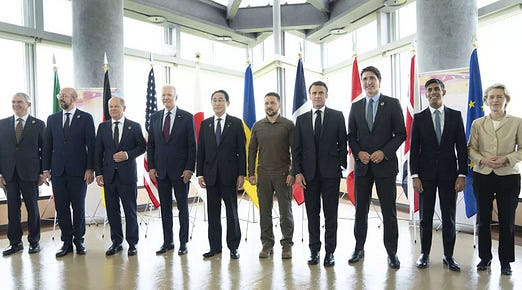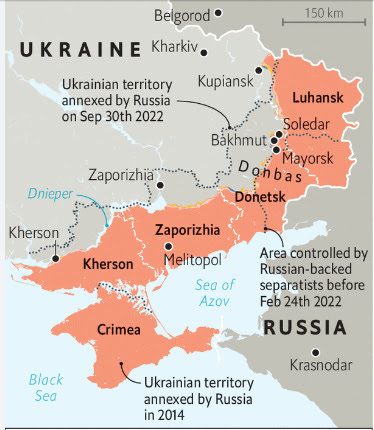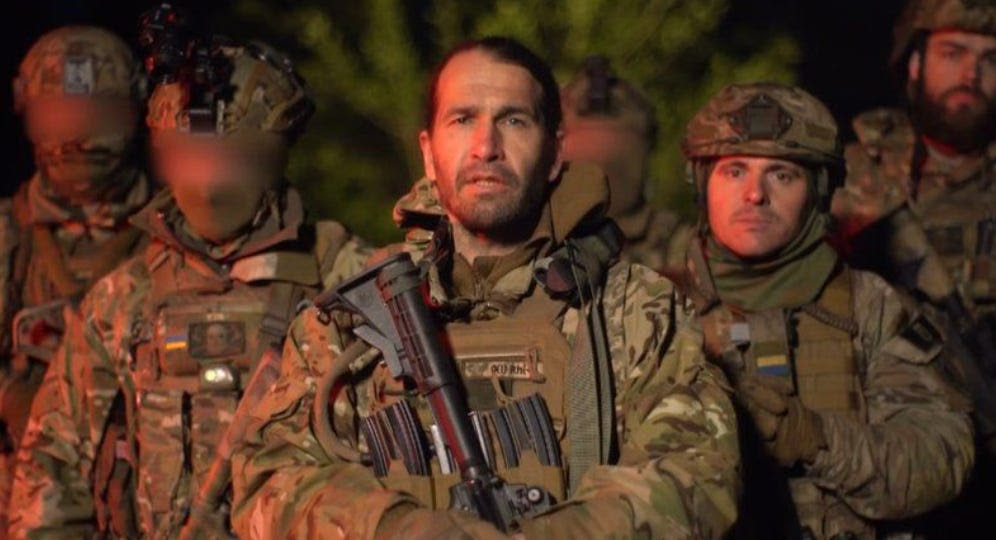Ukraine’s counteroffensive is underway. President Volodymyr Zelensky just completed a charm offensive by meeting leaders in Britain, Germany, France, Italy, Brussels, the Vatican, Jeddah, and the G7 plus India in Hiroshima. Each time, he garnered support and collected tens of billions of dollars’ worth of pledges for humanitarian aid and military hardware. Most importantly, he has reprogrammed the world’s “software” and world opinion shifts dramatically against Russia and in favor of Ukraine. Europe now provides weapons that America has been hesitant to send. A majority of UN members insist that Russia leave Ukraine immediately. A cascade of Global South leaders -- from China, Saudi Arabia, South Africa to India – offer to mediate a solution. And militarily, Ukraine has launched an incremental counteroffensive, not a Blitzkreig. This is how a small and clever nation, with a sling shot and good aim, can and will slay an inflexible colossus.

JOIN US ON TELEGRAM
Follow our coverage of the war on the @Kyivpost_official.
Zelensky with the G7 in Hiroshima
The tedious and slow slaughter in Bakhmut, and a recent raid inside Russia in Belgorod, may not be knock-out punches but have shredded the Kremlin’s narrative about its military greatness and patriotism. Bakmuht is now synonymous on Moscow’s streets with defeat and dissension among the ranks. The insanity of fighting over a town of 70,000 without strategic importance has grievously harmed Russia’s reputation and forces. Casualties are horrific on both sides, but Bakhmut has decimated the Wagner Group mercenaries due to fierce fighting by Ukrainians and also due to sabotage by rival Russian generals who withheld ammunition to punish their critical and ambitious boss Evgeny Prigozhin. This rivalry was publicized across Russian social media channels and has demoralized troops and undermined Putin and the Kremlin.

EXPLAINED: What We Know About Russia’s Oreshnik Missile Fired on Ukraine
For Ukraine, Bakhmut has been a “win” for other reasons. Russia has been preoccupied and pinned down there for nine months. During this time, Kyiv has acquired a fearsome arsenal and is creating what will be history’s first digitized, cyber, and networked armed force. Thousands of drone pilots have been trained to rain down bombs on Russian troops and artillery, and Ukraine has more than 1,500 tanks and armored vehicles plus medium and long range artillery.
On May 21, Russia declared it controlled Bakhmut, a debatable statement designed to steal the limelight from Zelensky’s triumphant tour of capitals. Putin even publicly congratulated his military for its “victory”. Then hours later, pro-Ukrainian Russian partisans with 13 vehicles grabbed headlines by invading Russia’s Belgorod region and capturing 35 square kilometers of territory in a matter of hours. Three villages were occupied and nine more evacuated and two anti-Kremlin groups – the Russian Volunteer Corps (RVC) and Freedom of Russia Legion – claimed responsibility. Moscow blamed Kyiv.

Belgorod may be short-lived but represents another “win” for Ukraine, along with many other attacks inside Russia that have destroyed infrastructure, ammo depots, ships, railways, and logistical hubs. These assaults amplify Russia’s military incompetence and highlight the fact that there is internal collaboration by partisans. They also force the deployment of troops away from major battle stations and divert attention. Such bite-sized breaches inside Russia’s border is a counteroffensive strategy that Russian blogger Igor Girkin predicted months ago. And Wagner’s Prigozhin commented that Belgorod proved how useless Russia’s generals are.
Two days later, on May 23, Russia insisted the insurgency was Ukrainian-led, was over, and that 70 attackers had been killed. None of this was unconfirmed by press reports and skirmishes have continued, along with drone attacks on the region. Meanwhile, Ukraine’s Deputy Defense Minister Hanna Malyar said bluntly: "We are not waging war on foreign territories” and an official in the Presidential Office wryly observed that “the only driving political force in a totalitarian country of tightened screws is always an armed guerrilla movement.”
The significance of Belgorod is that Russia now faces a “multi-domain” security threat. Stephen Horrell, non-resident senior fellow of Transatlantic Defense and Security at the Center for European Policy Analysis, told Newsweek that attacks by such groups “fit hand in glove with the shaping operations necessary to make Ukraine's counteroffensive successful. This goes along with other deep strikes we are starting to see. This also seems more substantial than other strikes or raids across the border—taking and holding multiple villages, the weight of effort with combat vehicles and such. The more places Russia has to worry about and devote troops to, the more likely a breakthrough [will occur] at one or more counteroffensive sites.”

Russian insurgents in the Liberty of Russia Legion invading Belgorod, mostly veterans from the country’s poor regions. BBC
The next six months will determine the war’s outcome and Ukraine has more strategic surprises up its sleeve. Besides creating a drone force, it will have a decent air force of F-16s in operation by mid-summer to protect its skies and bomb soldiers along the “Maginot Line” that Russia’s plodding generals have built which consists of miles of trenches and dragon’s teeth. Kyiv knows that smart ideas, not blunt force warfare, will win the day.
Moscow also suffered a major technological setback on May 4 when the U.S. Patriot system intercepted a Kinzhal hypersonic missile. Moscow had, for years, boasted that its Kinzhals, which are nuclear-capable and travel at up to 10 times' the speed of sound, were unstoppable. Worse for the Kremlin, on May 16 Russia launched a “saturation attack” including several Kinzhals, other missiles, and drones, and all were destroyed by the Patriot system. This has singlehandedly changed the nuclear risk calculus going forward globally, and also represents a triumph for the Pentagon. Ukraine has only one Patriot system so far, but Taiwan has 50 Patriot systems.
In addition, the Europeans are shipping sophisticated air defense systems to blanket the country and liberate Ukrainians from constant bombardment. Besides saving lives, this no-fly zone will also shield Ukraine’s military-industrial complex so that it can swing fully into gear and produce enough missiles, drones, and ammunition to expel Russia from its territory and keep it away permanently.
Once Ukraine has a bigger air force, it will be able to destroy Russian positions, warships, air bases, and Putin’s prospects. Ukraine has requested 200 F-16s (it has 41 MIG fighter jets) and America finally gave owners permission to give them to Kyiv. Already, the Netherlands, Denmark, Belgium, and Norway have committed to supplying 125 and dozens may be fully operational in a few weeks because Ukrainian pilots have been secretly training on them for months. In addition, Ukraine now has many trained tank brigades. As Ben Hodges, retired American general, commented “I would really hate to be a Russian private sitting in a trench right now, waiting for all this to start.”
But it’s already started. Bakhmut won time; Belgorod has rattled the enemy; and Ukraine’s brains and bravery will win the war.
The views expressed in this opinion article are the author’s and not necessarily those of Kyiv Post.
Reprinted from [email protected] - Diane Francis on America and the World See the original here.
You can also highlight the text and press Ctrl + Enter






